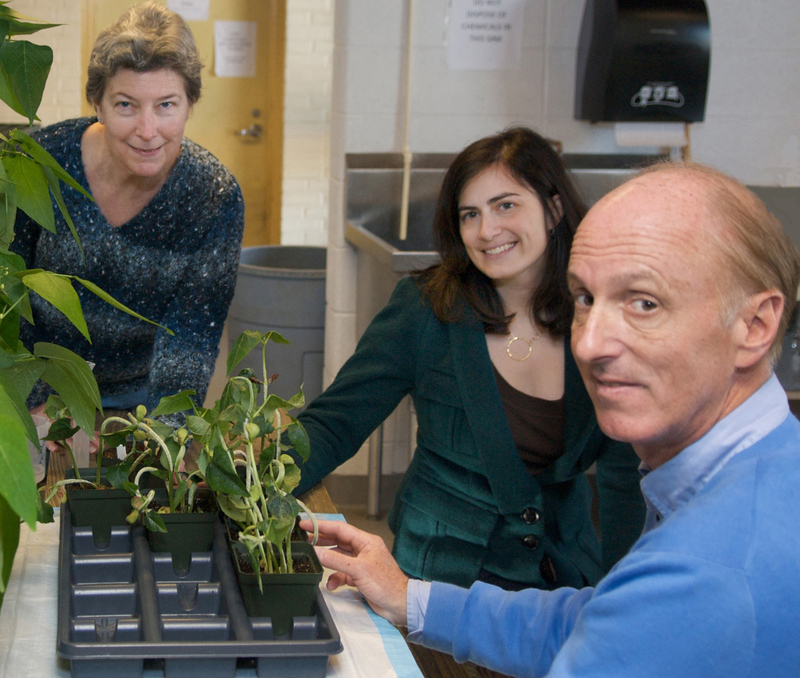It came, we drank it, and it’s gone. The homegrown Dogfish Head beer, Native Ale, was developed, brewed, tapped and is no longer available, but the story behind the ale will live on in Delaware history. Developed using all Delaware products, Native Ale contained a new yeast created in collaboration with farmers, brewers and University of Delaware researchers.
Tom Evans, professor of plant pathology, and Nancy Gregory, cooperative extension associate in the Department of Plant and Soil Sciences, worked with UD researchers and Dogfish founder Sam Calagione to make the yeast, starting with peach skin. The new yeast, known as KA-1, can be used again for future Native Ale batches, but Calagione plans to create another new yeast for the spring season.
Gregory said thousands of yeasts exist in the world, but most beermakers use off-the-shelf varieties. Katrinka Housley, lab technician for Dogfish, said the brewing company already owns a cultivated yeast that it uses for most brews, but in this case, the company chose to develop a new, wild yeast for use in an entirely Delaware ale.
In late summer Evans, Gregory and several others, met at Fifer Orchards where they set out about 100 plates to collect micro-organisms that would become the new yeast.
Colonies of yeast had to be isolated from plates that contained bacteria and various fungi. “It was my expertise in microbiology that gave me the skills and knowledge to transfer out into pure culture those that looked like yeasts,” Gregory said.
Gregory was looking for just the right colony to make a delicious yeast.
“We looked for those that seemed to be pure colonies, not mixed with any other fungi or bacteria,” Gregory said. “We opened the plates and smelled the cultures. Some smelled bad, with a rotten smell, some smelled a bit like bread yeast, some smelled fruity. We chose the bready and fruity ones.”
After five weeks of work, Gregory narrowed the group down to 25 possibilities, then she reduced it down to eight pure colonies, which she sent to Dogfish Head.
“It was really fun being a part of this collaboration,” Gregory said. “Now anyone in Delaware can get this new yeast by contacting the university.”
It is unclear if any other states have a state yeast, but it’s a good guess that Delaware is among the first to cultivate one.
“This project was unique,” said Evans. “It isn’t often we work with the production side. This is different, but still meets our mission of supporting Delaware agriculture.”
Gov. Jack Markell said KA-1 is now the honorary state yeast and when the Legislature resumes in January, it could vote to make it the official state yeast.
“To tell you the truth, I have wanted to acknowledge Delaware’s honorary yeast strain for a long time,” said Markell. “We’ve got some great craft beer brewers and bakers who will testify that yeasts can be temperamental, difficult to see and generally very hard to interview.”
“This yeast has a lot of work ahead of it, thanks to the hard work of the many Delawareans involved,” said Markell.
For more information contact the University of Delaware Department of Plant and Soil Sciences at 302-831-2531.
More about Delaware yeast
This yeast is normally found on grape and other fruit.
It produces small spores that may get airborne or be carried on debris or by fruit flies.
The yeast developed for Native Ale is not the same kind of yeast used in breadmaking. Breadmaking yeast is in the genus Saccharomyces. The Native ale yeast is in the genus Kloeckera.
“Although yeast cells or spores are found in many environments, you need to grow them on agar media to recognize them,” Gregory said. “After it is grown on a suitable medium, the cells are harvested and pressed into cakes, or dried into a powder. That is what is used in bread making or brewing.”
















































